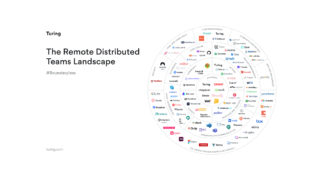
10 Best Cities on Earth for Remote Workers
Remote workers enjoy an enviable combination of freedom, productivity and job satisfaction. What better way to celebrate work and life than to travel while you earn your living!
With countless breathtaking locations on the map, a bit of thought should go into your destination choices. You’ll want reliable internet, of course, as well as affordability, nice weather (however you define “nice,”) and workspaces to accommodate your productivity.
If you’ve got remote work and a passport, all you have to do next is decide where to venture off to. The following list of cities might spark interest and give you some ideas.
Canggu, Bali

Photo by Harry Kessell on Unsplash
One of the alluring factors of Canggu is, of course, its weather. With temperatures in the mid 80’s (F) all year round, it attracts surfers and digital nomads who love living outdoors.
For work, there are co-working spaces and plenty of cafes and restaurants, most featuring decent WiFi. Also, for being a resort village, Canguu is affordable.
Known for:
- Laid back atmosphere
- Culture
- Beaches
- Dining
- Temples
TIP: Bring your laptop to Machinery Cafe, the “first and favorite locally owned co-working cafe in Batu Bolong, Canggu.” With coffees, meals, and plenty of new faces to meet every day, you can’t go wrong.
Bangkok, Thailand

Image by Alvin Aden Ardenrich Pan from Pixabay
If you’re looking for a large-city lifestyle mixed with a subtropical climate, you’ll likely fall in love with Bangkok. The capitol of Thailand and the country’s most populated city, it’s home to over eight million inhabitants. You’ll always find plenty of restaurants, nightlife and new things to do, which makes this exotic metropolis ideal if you’re an adventurer.
The traffic here is famously bad, so plan to get around by using the Skytrain (Bangkok’s Mass Transit System.)
Known for:
- City life, including night life
- Royal palaces and temples
- Museums
- Dining and Shopping
TIP: Looking for a place to get work done? For delicious coffees and foods of many types, start by heading over to (Not Just) Another Cup. Their menu is quite good, so bring your appetite along with your workload.
Mexico City, Mexico

Image by Rodrigo de la torre from Pixabay
Mexico City is a land of urban sunshine and amazing street food. It’s less expensive here than in both the US and Europe, and it’s also home to many co-working spaces and coffee shops.
For lodging, Airbnb is a popular option with digital nomads in Mexico City. And for transportation, you’ll have access to a robust subway system (which is the fastest and cheapest way to get around the city.)
Known for:
- A rich cultural center
- Financial center
- Music and theater
- Art
- Street vendors
TIP: To really get productive, check out the Punto Working Space for an inexpensive but accommodating co-working environment.
Belgrade, Serbia

Photo by Dragan Jankovic Faza
If you have an appreciation for culture, history and night life, run – don’t walk – to Belgrade. Yes, winter gets gold here, so come in the summer months if you’re looking for warmth and sunshine. But if you’re fine with snow, there’s a lot to experience in the winter season. Winter lovers flock to the annual Belgrade Christmas market, as well as Košutnjak forest (a beautiful city park/forest where you can hike and picnic.)
Known for:
- Architecture
- Nightlife
- Sports
- Fashion and design
TIP: For great coffee and a splash of music, consider getting your work done at Zaokret. And when you’ve wrapped up your work, order some beer as well.
Porto, Portugal

Image by nathsegato from Pixabay
Portugal has lovely weather and many sights to see, but it does get cold in winter months. Fortunately, Porto is more affordable than the more well-known Lisbon, which makes it ideal for remote workers who want to experience this country.
In Porto, you’ll have access to reliable public transportation as well as accommodating co-working spaces. (The co-working environments are better workspaces than the cafes in Porto.) You’ll also find several networking meetups and community lunch and drink events where you can meet other remote workers.
Known for:
- Architecture
- Urban environment
- Port wine
- St. John Festival (São João Festival) on June 23-34
- Universities
TIP: For a few cafes that are great for working in Porto (since they have plenty of outlets, tables and WiFi,) take your work over to Mesa 325, Brando Casa do Café, or Combi Coffee.
Tampa, Florida

Image by Michelle Maria from Pixabay
For digital nomads who want to experience adventure in the US but don’t have the budget for New York City or Silicone Valley, Tampa is a perfect choice. It’s sunny all year, there’s no shortage of night life, and it offers the rare benefit of not withholding state income tax.
Known for:
- Arts and culture
- Water sports
- Ybor’s cigars
- Clubs and nightlife
TIP: For productivity, a couple great places to get work done are the Felicitous Coffee House and the Foundation Coffee Company. Also check out Hyde Park Village for more choices.
Buenos Aires, Argentina

Deensel – High-rises of Puerto Madero
Buenos Aires is another location where you can ditch your winter wardrobe. Many remote workers love this destination because of its diverse population and bustling cosmopolitan areas. It’s also attractive to travelers who love theater and art.
Although Buenos Aires is Argentina’s largest city, it’s nonetheless quite affordable for visiting and living. It also has a large subway system and offers public bike sharing.
Known for:
- Multiple ethnic groups, languages, and religious groups
- Rich music traditions
- Film/cinema
- Television networks
- Fashion
TIP: Bring your workload to Mooi Restaurant for an attractive environment and brilliant foods and treats. Tea Connection is another most-visit venue.
Berlin, Germany

Photo by Harald Krichel
One aspect that makes Berlin so attractive for remote workers and digital nomads is its central location. Seated in the heart of Europe, travelers are well-positioned to visit anywhere else they want on the continent.
For work, there are plenty of cafes and reliable internet connections in Berlin, along with co-working spaces and networking events. Also, since many people speak English here, it’s easy to get tips from locals who know the area.
Known for:
- Performing arts
- Science and higher education
- Nightlife
- Museums and galleries
- High standard of living
TIP: Don’t miss this workspace hotspot! Located on the ground floor of Microsoft Berlin, the Digital Eatery offers free workshops, WiFi and technical support.
Prague, Czech Republic

Photo by Jaromír Kavan on Unsplash
Prague has become an attractive destination for expats and remote workers all around the world. It’s welcoming of tourists, full of history, and rich in museums and galleries. Not only is Prague loved for its reliable transportation system, fast internet and other urban offerings, but it’s also affordable enough for the digital-nomad lifestyle.
Known for:
- City life and clubs
- Universities, science, and high-tech centers
- Prague Castle and the Prague astronomical clock
- Historical exhibits and museums
TIP: Check out Café Pavlač for a unique remote-work experience. It features a café, bar, art gallery, great food and friendly staff.
Beijing, China

Photo by 郭友柏
Beijing is a bustling urban environment where you can experience unique adventures and meet many business- and tech-minded people. It features a wide range of weather, from cold and windy winters (but little snow) to hot, humid summers. There are plenty of co-working spaces in this city, as well as a robust public transportation system to get there.
Known for:
- Science and tech
- Business
- Nightlife
- High-speed rail networks
- Universities
TIP: For co-working, check out the SimplyWork coworking space, as well as WeDo in several locations.
Have you traveled and worked in any of these cities? Or have you been somewhere not mentioned in this post? We’d love to hear from you, so let us know about any tips you have for new remote workers or aspiring digital nomads.
Join a network of the world's best developers and get long-term remote software jobs with better compensation and career growth.








